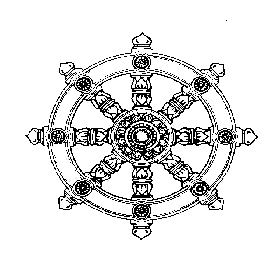Learn Japanese in a friendly atmosphere from native-speaking bilingual teachers.
MOST COMPREHENSIVE JAPANESE LANGUAGE SCHOOL IN CALIFORNIA /
FOUNDED IN 1915
WE BUILT OUR REPUTATION ON OUR QUALITY. 少欲 知足
行住坐臥 ![]()
Learn Japanese in
a friendly atmosphere from native-speaking bilingual teachers.
After paying the tuition, the pupil's name will appear in the class list that will be posted on the Soko Gakuen bulletin board in the building (or mailed out to you) by the first day of instruction. The pupil, however, may be able to CHANGE CLASSES WITH THE TEACHER AND COORDINATOR'S APPROVAL; Or the teacher and coordinator may suggest that the pupil change his or her class during the first few weeks.
LATE REGISTRATION FEE
There will be a $20 late
registration fee assessed for all registration forms
received at the
Soko Gakuen Office after the registration day (Saturday,
8/16/25).
APPLICATION OR ENROLLMENT FEE
None.
Soko Gakuen has a strict "No Jacking Money from the little guy"
policy.
AWARDS & HONORS
A KAIKIN SHO (PERFECT
ATTENDANCE AWARD) will be given to the pupil who has had perfect
attendance during the academic year, and a SEIKIN SHO (GOOD ATTENDANCE
AWARD) to the pupil who has had 1 or 2 absences during the
academic year. A DORYOKU SHO
(EFFORT AWARD) may be given to the pupil whose effort throughout
the academic year was laudable.
JAPANESE ON THE INTERNET ![]()
http://web-japan.org/kidsweb/index.html
http://www.ajalt.org/rwj/menu3.htm
http://www.synapse.ne.jp/~iichiki
HOLIDAYS
NO CLASSES will be held on LABOR DAY,
during the Thanksgiving Day week, and Christmas.
Y.
HIGASHINO, Instructor (4/22- ). *photo*
BA in English literature, Otsuma women's University, Tokyo, Japan;
AA (2020) in Asian American Studies / Marketing at CCSF, San
Francisco. MA (2023) in Japanese pedagogy, Columbia University, New York; and MA
(2024) in linguistics, San Francisco State University. Her
publications include Tips
for navigating Japanese learning online, Nichibei Times
(April 2021); Asahi Tanka (short poems--6/14/20, 7/5/20,
and 8/16/20) in Asahi Newspapers (2020). Certified in an
International tutor training program at Columbia University.
Y. KOMORI, Instructor
(6/00-).
*photo*
BA (1990) in business and humanities, Golden Gate
University. Certified to teach Japanese as a second language, Hoso University, Chiba,
Japan. Taught Japanese at Nissait Language School, Tokyo, Japan
(1980-1989).
R. KONDO, Instructor (9/07-).
*photo*
BA in linguistics, Shinshu
University, Japan; MEd
(2006) in teaching English as a second language, State
University of New York at Buffalo; and MA (2015) in teaching Japanese
as a second language at San Francisco State University. Taught
Japanese at the University of California, Berkeley (summer 2008).
M. OTA,
Instructor
(9/07- ). *photo*
BA in language and culture, Osaka University of Foreign
Studies, Japan; MA (2007) in teaching English as a
second language, San Francisco State University.
Certified to teach Japanese (2001), ARC Academy Japanese
Language School, Osaka, Japan. Taught Japanese
at the University of San Francisco (2018-2022 ).
TEACHING ASSISTANT(S) / VOLUNTEER(S)
Julie McCormick, TA (9/15- )
ponyocharm@gmail.com
*photo*
Emi Saunders, TA (9/15- )
(9/25- ) emisaunders10@gmail.com *photo*
EX-TEACHING ASSISTANTS AND TEACHERS

![]() Smoking is bad for
you.
Smoking is bad for
you.
BEGINNING {6 through 8 years old}. The instructional materials prepared by the teacher. Upon completion of this course, the pupil should be able to: (a) be familiar with KATAKANA and use them in sentences; (b) learn and sing several traditional Japanese children's songs; (c) make ORIGAMI--Japanese folding paper; (d) ask and tell people's names, and write them as well; (e) use DARE DESU KA, ...DESU; NANI GA ARIMASU KA, ...GA ARIMASU, NANI GA IMASU KA, ...GA IMASU, ARE WA NAN DESU KA, ...WA ...DESU, NANI O TABEMASU KA, ...O TABEMASU, NANI GA HOSHII DESUKA, ...GA HOSHII DESU; (f) construct sentences using ...IMASU, ...ARIMASU, ...SUKI DESU, ...HOSHII DESU, ...TABEMASU, ...NOMIMASU; (g) understand Vte KUDASAI; (h) use expressions used in the morning KAO O ARAIMASU, HA O MIGAKIMASU, etc.; (i) use expressions used at school SENSEI, OHAYOU GOZAIMASU; (j) use numbers in sentences NANNIN KIMASHITA KA, ...NIN KIMASHITA; (k) listen and enjoy a Japanese story FUKUROU; (l) express desire ...GA TABETAI, ...GA NOMITAI; (m) use ....O SHIMASHOU, ...O SHIYOU; (n) ask and tell telephone numbers SENSEI NO DENWA BANGOU WA... .. .... DESU; (o) enjoy the NAZO NAZO language game; (p) learn expressions ASOKO, SOKO, and KOKO in a conversation; (p) use ....WA DOKO NI IMASUKA, ...NI IMASU; (q) DON NA DOUBUTSU GA SUKI/HOSHII DESUKA, ...GA SUKI/HOSHII DESU, (r) use NAN DE TSUKURU NO? ...DE TSUKUROU, IKURA DESU KA, HITOTSU 3 DORU DESU, MELON TO RINGO DE 5 DORU DESU, ...O KUDASAI, ...MADE IKIMASU, MIGI/HIDARI NI MAGARI MASU, ...E ...DE IKIMASU, (s) express how you feel or what you did ...GA ITAI, ...O TABETA, ...O NONDA, ...GA TABETAI, (t) learn expressions ...E IKOU, ...O TSUKU ROU; (u) use ...O SHITE IMASUKA, ...WA ...O V te/de IMASU, (v) tell what you did yesterday ...JI NI ...O ...MASHITA, (w) enjoy a Japanese folk tale "SARU TO KANI" (x) ...NI ...O AGEMASU, ...O ...KARA MORAIMASU, (y) describe pictures OTOU SAN WA SHINBUN O YONDE IMASU, etc.; (z) learn some simple KANJI. Children also enjoy RAJIO TAISOU during the first recess (10:00-10:15 a.m.) http://www.biwa.ne.jp/~hykw5104/rajiotaisou.html
INTERMEDIATE {9
through 11 years old}. TEXTBOOK: Kodomo no
Nihongo 1. Upon completion of this course,
the pupil will be able to achieve the following
learning outcomes: (L1) greet and introduce oneself, (L2) use
demonstratives (KORE, SORE, ARE) and negate nouns, (L3) use
KOKO, SOKO, and ASOKO to ask where questions, (L4) express
preferences and describe things using adjectives, (L5)
understand and use dates, months, and days of the week with
simple verbs, (L6) describe actions with time, (L7) conjugate
verbs in negative forms, (L8) negate adjectives and use NAGARA
and MASHOO forms, (L9) use existence verbs (ARIMASU, IMASU),
(L10) order items with counters, and (L11) conjugate verbs into
dictionary and short negative forms.
ADVANCED {12 through 14 years old}.
TEXTBOOK: Japanese for young people. And
the instructional materials prepared by the teacher, upon
completion of this course, the pupil should be able to: (a)
introduce oneself and others (L.1), ask and give phone numbers,
say please and thank you (L.2), ask and tell time, show hesitation
(L.3), ask and give days of the week, apologize (L.4), ask and
give ages, ask and tell dates, introduce family members, express
cautions such as ABUNAI/DIAJOBU, ask about welfare and assure
safety (L.5), ask and give prices of goods, request things,
indicate decisions (L.6), ask about the country of manufacture,
use spatial/location words, use counters such as -TSU, -HON, -MAI
(L.7), use shopping words (L.8), describe things, offer and accept
things -WA IKAGA DESUKA/ITADAKI MASU (L.9), show intentions,
express habitual action-- verbs, adjectives, adverbs of frequency,
etc. (L.10), express completed actions (L.11), express coming and
going, going out and coming back (L.12), visit a place, greet
guests (L.13), and speak to SEMPAI (L.14). (b) Learn more about
Japan (society, culture, history, etc.), learn approximately 80
Kanji, sentence patterns, and verb
conjugations.
![]() 行住坐 臥
行住坐 臥
OPEN HOUSES. Class observation by parents or guardians, October.
SHIN NENKAI or NEW YEAR'S PARTY, January.
Northern California Cherry Blossom Festival, April.
GRADUATION,
PROMOTION, GAKUGEIKAI
& POTLUCK SOCIAL GATHERINGS.
These activities
are an essential part of the children's learning
the Japanese language and culture. All parents are encouraged to
participate in these school activities, June.
GAKUGEIKAI or GAKUSHUU HAPPYOUKAI.
(Small presentations such as short skits, singing, etc. by pupils). Once a year all parents are welcome
to attend the GAKUGEIKAI and are expected to encourage their
children to participate.


![]() Drugs are bad for you.
Drugs are bad for you.
* * * * * ACTING ON PRIORITIES : A COMMITMENT TO EXCELLENCE * * * * * Mission Statement
Soko Gakuen is devoted to conveying Japanese traditions. We insist
on a high standard of conduct from our students. If a student does
not behave properly, the parents will be notified. If the problem
continues, the student may be asked to withdraw from the school.
桑港学園は、日本の伝統を受け継ぎ、教えることを一つの大きな
目標にかかげています。生徒には、教師の言いつけをよく守り、礼儀正しく、品位のある行いを期待します。もし生徒の授業態度その他に難点
のある場合は、親もしくは保護者に直ちに連絡します。注意にもかかわらず、生徒の行いの改まらない場合はには退園処分とします。
![]() ☻ Got IAD?
Get help!
☻ Got IAD?
Get help!
Malaise, anxiety, inner agitation, poor memory, and
irritability are very likely to be caused by
excessive use of smartphones. Clinical depression,
manic depression, persistent distress, a sense of
hopelessness, feeling emotionally flat, overwhelmed,
and trapped are also likely to be related to
excessive use of smartphones. There is a dire
warning that debilitating brain disorders are on the
rise - from children diagnosed with autism and ADHD
to adults developing dementia at younger ages than
ever before. It is recommended to tell yourself and
your friends to "Stay away from smartphones, also
known as High-End Gadgets (HEGs), to protect your
brain for life," and for a "future to believe in."
https://www.youtube.com/watch?v=-L58niidJM0&t=562s
RULES FOR PUPILS AT SOKO GAKUEN / THINGS TO REMEMBER
CLASS HOURS
9:00-10:00, (GYM 10:00-10:15,
SNACKS 10:15-10:30), and 11:30-12:00.
BRING PAPER, PENCILS, A PEN AND YOUR NOTEBOOK AND TEXTBOOK TO CLASS EVERY SATURDAY. DO GREET IN JAPANESE AT THE BEGINNING AND AT THE END OF EVERY CLASS. BE IN YOUR SEAT AND READY TO WORK ON TIME. PARTICIPATE IN ALL CLASS ACTIVITIES.
ATTENDANCE POLICY
All pupils must come to class on time. Arriving 10
or more minutes late or leaving early will mean the pupil is
tardy. Three (3) times being tardy will be counted as one
absence. 3 lates (or 3 LE) = 1 absence. The teacher may exclude
any pupil whose absences in a course exceed 20% (4 absences per
semester) of the scheduled classes from the final exams and
record a U grade for them. Three (3) absences will cause grave
concern and require a conference. Missing homework assignments
will affect your final grade. If you miss a class, it is your
responsibility to find out what your class covered during that
class so that you can be ready for the next class.
THE FOLLOWING ARE PROHIBITED IN THE SOKO GAKUEN
BUILDING
Running, sitting on the table, and eating during
class time (i.e., 9:00 a.m.-12:00 noon) are not allowed.
However, you may have soft drinks or snacks in room 106 during
recess. You must clean and tidy up the room after eating.
Playing in the building (including the foyer or hallway area) at
any time, sitting on the window sills or leaning out the window,
yelling, screaming, or making disruptive noises, writing
graffiti in the school building, bouncing balls, and
skateboarding are also not allowed. In addition, no food,
chewing gum, electronic devices (smartphones, iPods, iPads,
AirPods, etc. Soko Gakuen is a smartPhone Free School.),
texting, Anime/manga, or video games are allowed in the
classroom.
https://www.youtube.com/watch?v=-L58niidJM0&t=562s
IN CLASS
Be well-prepared for your own performance. Raise
your hand when you want to speak in class. Do not answer when
other pupils have been called on. All work must be written
legibly in dark pencil or blue or black ink. You must listen to
and watch others politely and carefully when they perform. It is
strongly encouraged to use Japanese only at all times in class.
Clean and tidy up the classroom furniture and materials after
using them.
* * * * * SERVICE WITH INTEGRITY * * * * *
 桑港学園 サ ンフランシスコ仏教会付属日本語学校
桑港学園 サ ンフランシスコ仏教会付属日本語学校 
期間:
2025年 9月 6日 〜 2026年 6月 6日
毎週土曜日 午前 9時 〜12時
1学期
2025年 9月 6日 〜 2026年 1月31日
2学期
2026年 2月 1日 〜 2026年 6月 6日
学級
幼稚部、初級 、中級、上級
5
![]() 登録方法
登録方法
2025年 8月16日(土曜) の 午前9時から
正午までの間に下記の住所におこし下さい。
440 Austin Street (at
Octavia),
San Francisco, CA
94109
授業料
年間 900ドル(電気・ガス・水道代 100ドル込み)。
450ドルを 各学期の始めに徴収します。 教科書代は別。
学園行事
オープン・ハウス、(新年会)、 学芸会、 (ポットラック・パーティ)、 仏教会・花
祭、 OBON (お盆)/
ぎ
んざバザーなど
少欲 知足
欲深き人の心と降る雪は積もるにつけて道を失う。- 高橋泥舟
Editor SeaMonkey/2.48